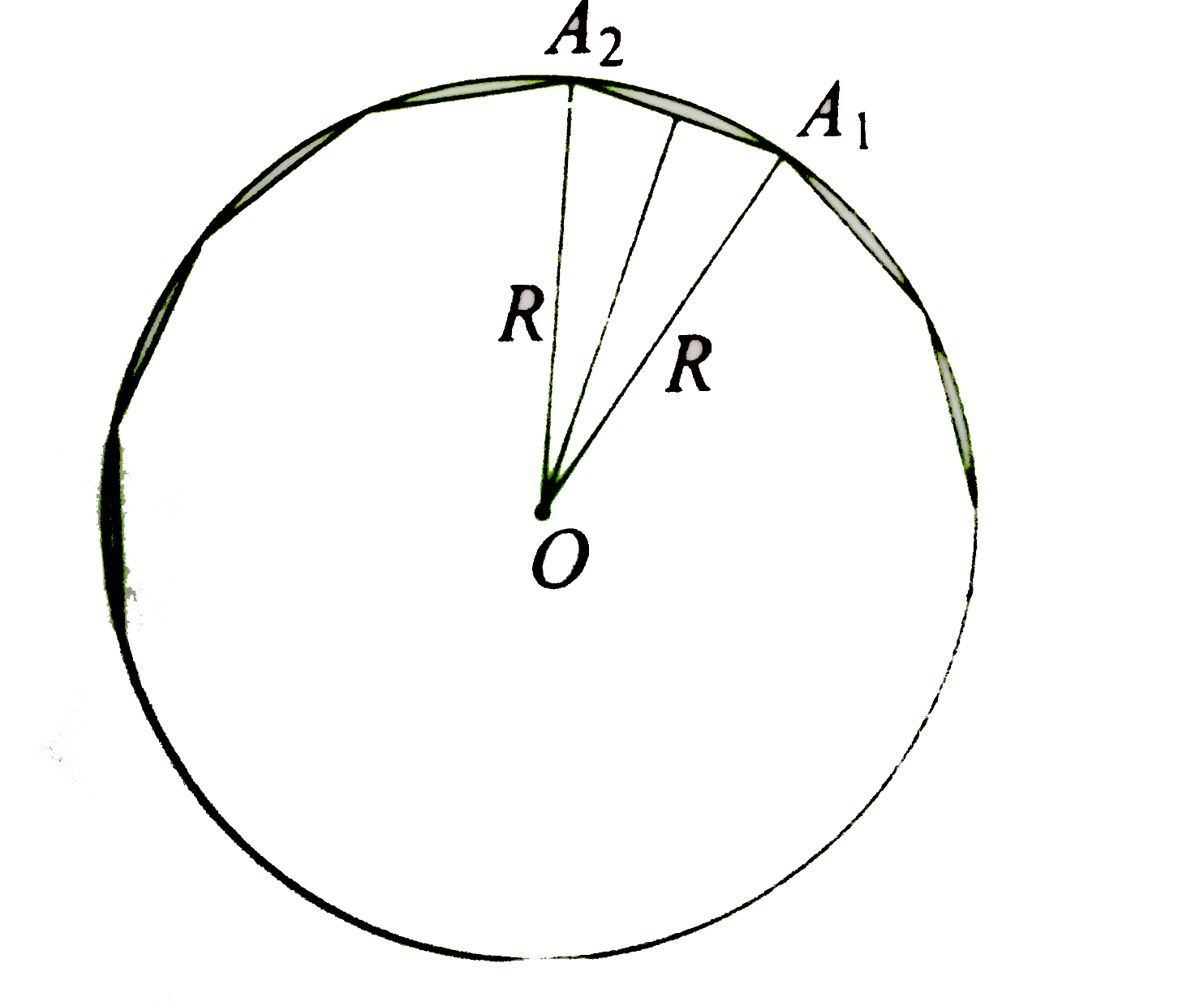Using limθ→0(sinθθ)=1 prove that the area of circle of radius R is πR2 Solution in Bengali
In the following figure regular polygon on n sides is inscribed in the circle of radius R.

In the figure, OA1=OA2=R and ∠A1OA2=2π/n Clearly area of polygon
Δ=n×(Area of the ΔOA1A2)
=n×12R×R×sin2πn
∴ Δ=nR22sin2πn
We know that circle is regular palygon having infinite number of sides. So, from above formula
limn→∞nR22sin2πn=limn→∞πR2sin2πn2πn
πR2limn→∞sin2πn2πn
=πR2×1 (∴limθ→0sinθθ=1)
=πR2
Thus, area of circle having radius R is πR2.
Topper's Solved these Questions
- LIMITSBOOK - CENGAGE PUBLICATIONCHAPTER - LIMITSEXERCISE - Solved Examples
15 Videos
- LIMITSBOOK - CENGAGE PUBLICATIONCHAPTER - LIMITSEXERCISE - EXERCISE 2.1
10 Videos
- JEE 2019BOOK - CENGAGE PUBLICATIONCHAPTER - JEE 2019EXERCISE - Chapter 10
8 Videos
- LINEAR COMBINATION OF VECTORS, DEPENDENT AND INDEPENDENT VECTORSBOOK - CENGAGE PUBLICATIONCHAPTER - LINEAR COMBINATION OF VECTORS, DEPENDENT AND INDEPENDENT VECTORSEXERCISE - DPP 1.2
10 Videos
Similar Questions
Evaluate:limn→∞n2⎧⎪ ⎪⎨⎪ ⎪⎩ ⎷(1−cos(1n)) ⎷(1−cos(1n))√(1−cos(1n))..∞⎫⎪ ⎪⎬⎪ ⎪⎭.
View SolutionEvaluate limx→−2+x2−12x+4.
View SolutionIf y = y(x) is the solution of the differential equation, xdydx+2y=x2 satisfying y(1) = 1, then y(12) is equal to
View SolutionThe number of integral values of p for which (p+1)ˆi−3ˆj+pˆk,pˆi+(p+1)ˆj−3ˆk and −3ˆi+pˆj+(p+1)ˆk are linearly dependent vectors is q
View SolutionUsing (lim)θ→0sinθθ−1 prove that the area of circle of radius R is πR2 (Figure)
View SolutionThe area of a sector of angle θ∘ of a circle with radius R is
View SolutionBy using intergration prove that the area of a circle of radius r units is πr2 square units.
View Solutionयदि sinθ=12, तो सिद्ध कीजिए कि 3sinθ−4sin3θ=1.
View Solutionसिद्ध कीजिए कि limθ→0sinθθ=1
View Solutionसिद्ध कीजिये कि-
limθ−0(sinθsinθ/2)=2
View SolutionProve that limθ→0sinθθ=1.
View Solutionसर्वसमिका sec2θ−tan2θ=1 का प्रयोग करके, सिद्ध कीजिए कि
sinθ+cosθ−1sinθ−cosθ+1=1secθ+tanθ
View SolutionProve that limθ→0sinθθ=1(θ measured in radians)
View SolutionProve that (1) the area of a sector of circle with radius r and central angle θ∘ is 12r2θ
(ii) the area of a sector of a circle of radius r and an arc of length s is 12rs
View SolutionProve that cot^(2)theta((sectheta-1)/(1+sintheta))+sec^(2)theta((sintheta-1)/(1+sectheta))=0
View SolutionProve that the area of a segment of a circle with radius r and sector angleθ is r22[πθ180∘−sinθ]
View Solution
